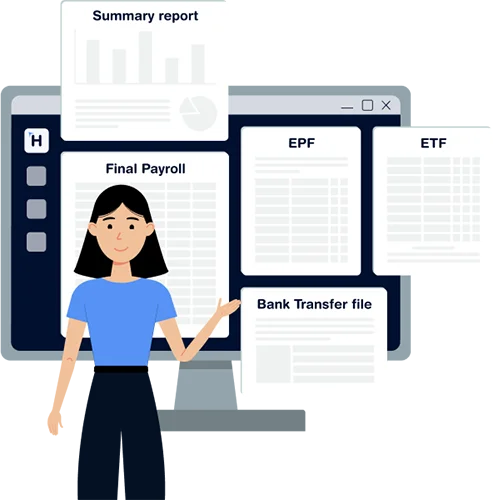In the modern world of business, where efficiency and accuracy are paramount, the choice between manual and automated payslips can significantly impact your company’s payroll management. While both methods have their merits, automated payslips shine as a beacon of convenience and practicality. In this blog, we will dive into the realm of payroll management to explore why automated payslips have become the go-to choice for companies seeking a seamless and efficient payroll process.
Before we delve into the incredible world of automated payslips, it’s essential to understand the significance of payslips in the first place. A payslip is much more than a piece of paper or a digital document; it’s a cornerstone of transparency, trust, and legality in the employer-employee relationship.
Here’s why payslips matter:
- Transparency: Payslips provide employees with a clear breakdown of their earnings, including basic salary, bonuses, deductions, and taxes. This transparency builds trust, ensuring that employees know they are being paid fairly and in accordance with the agreed terms.
- Legal Requirement: In many jurisdictions, providing payslips is a legal requirement. Failure to provide accurate and timely payslips can lead to legal issues and fines for employers. Compliance with labor laws is essential to avoid potential legal trouble.
- Financial Planning: Payslips empower employees to plan their finances effectively. They can track their income, monitor deductions, and make informed decisions about savings, investments, and expenses.
- Proof of Income: Payslips serve as proof of income, often required for various financial transactions, such as applying for loans, renting apartments, or obtaining government benefits.
- Tax Compliance: Payslips assist employees in understanding their tax obligations. They contain critical tax-related information, helping individuals file accurate tax returns.
Manual Payslips: A Traditional Approach
Manual payslips, the traditional approach to payroll management, involve creating and distributing physical payslips, often with pen, paper, and manual calculations. While this method has its place, it comes with several limitations:
1. Time-Consuming: Preparing manual payslips can be a time-consuming endeavor, especially for larger organizations. This can lead to delays and potential errors.
2. Error-Prone: The human element introduces a significant risk of errors in calculations, data entry, or distribution, potentially causing payroll discrepancies and employee dissatisfaction.
3. Environmental Impact: The use of paper payslips contributes to environmental waste and may not align with sustainability goals that many companies are now embracing.
Automated Payslips: The Beacon of Convenience
In contrast, automated payslips, facilitated by payroll software or systems, offer a plethora of advantages, with convenience being a standout feature:
1. Efficiency: Automated payslips streamline the entire payroll process, reducing the time and effort required to generate and distribute payslips. Employees can access their payslips with just a few clicks, eliminating the need for physical paperwork and distribution.
2. Accuracy: Automation ensures that payroll calculations are precise, minimizing the risk of errors and ensuring that employees are paid correctly and on time.
3. Security: Electronic payslips can be securely stored, accessed, and backed up, reducing the risk of data loss. Employees can access their payslips at any time, eliminating the need to request duplicates and enhancing data security.
4. Environmental Friendliness: Automated payslips align with sustainability initiatives by reducing paper usage and waste, making it a responsible choice for businesses aiming to reduce their carbon footprint.
Making the Right Choice for Your Company:
Choosing automated payslips isn’t just about staying on trend; it’s about revolutionizing your payroll management. Here’s how to make the right choice for your company:
- Assess Your Current Pain Points: Take a hard look at your existing payroll processes. Are they causing you headaches, delays, or errors? If so, it’s time for a change.
- Employee Engagement: Consider your employees’ preferences. Many modern workers appreciate the convenience of digital access to their payslips.
- Budget and Sustainability: While there may be an initial investment in automation, think long-term. The efficiency and sustainability benefits often far outweigh the costs.
- Smooth Transition: If you’re switching from manual to automated payslips, ensure a seamless transition. Provide training and support to employees to make the shift as painless as possible.
Conclusion:
In conclusion, while manual payslips may have their place, the exceptional convenience of automated payslips cannot be overstated. Embracing automation in your payroll processes can lead to a more efficient, accurate, and sustainable payroll management system. Ultimately, it’s a choice that benefits both your organization and your valued employees, providing a streamlined and convenient payroll experience that aligns with the demands of the modern business world.

